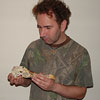With new fossils being discovered, new information about dinosaurs comes to light all the time. Just today, a study reveals evidence of dinosaurs adapted to hunt in the dark. Stig Walsh, an author on this study, illuminates further.
Barn owls are incredible birds. They can hunt in total darkness, making no sound as they glide slowly to catch their small mammalian prey unaware of the deadly claws and beak above. They look pretty amazing too. Those huge eyes seem to face forward just like ours do, giving them a large degree of visual overlap between each eye. This is called stereopsis, and it gives them an excellent ability to judge distance.
There is no doubt that barn owls have evolved some pretty extreme adaptations to their nocturnal life. Their eyes are large because they have to house huge numbers of light receptors, called ‘rods’, making their eyes as light-sensitive as a sniper’s image-intensifying night sight. In fact, these owls’ eyes are so large and packed with light receptors that they have become fused to their eye sockets by a ring of bones called the scleral ossicles, found under the surface of each eye. That’s why these owls are able to turn their heads through such an extreme range of motion: their eyes cannot move, so their heads have to be able to turn instead.
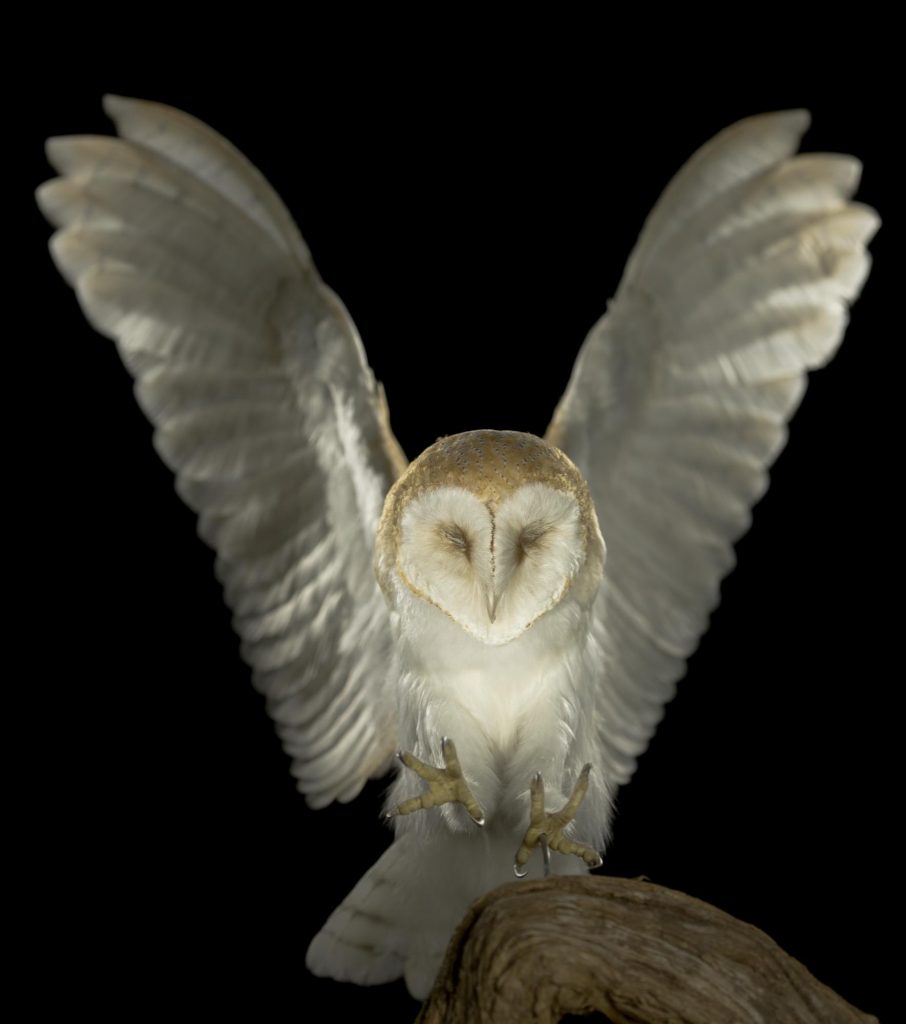
As striking as their eyes are, the real story is about their ears. Unlike mammals, birds (and their dinosaur ancestors) have no external ear to help funnel sound waves into the hearing apparatus. However, the facial feathers of barn owls actually perform much the same function. Not only that, but the skull of these owls is asymmetrical. This helps them to judge the direction and distance of a sound made by their prey. They can even control the opening of their outer ears to localise sound behind them.
Inside their skulls, their inner ears have the longest cochlear canal of any bird. This canal houses the organ of hearing, known as the basilar papilla. The longer the basilar papilla, the more sensitive a bird’s ear is to a wider range of hearing frequencies. The barn owl needs this to detect the high-pitched sounds made by its small rodent prey.
3D model of a Barn owl skull showing the scleral ring and cochlea canal. (Courtesy of University of the Witwatersrand, South Africa.)
OK, so living owls are pretty special birds, but when did these adaptations evolve? The oldest known fossil owls are from around 55 million years ago, and it’s very unlikely that those early owls would have had anything like the adaptations we see in owl species today. If I had to stick my neck out and estimate when these adaptations did first appear, I would probably go for some point in the last 30 to 20 million years. In the evolutionary scheme of things, that’s fairly recently.
Could any of the dinosaur ancestors of owls have had such specialised senses? If owls really only developed their sensory specialities over the last few tens of millions of years, how could dinosaurs have been anywhere near as complex?
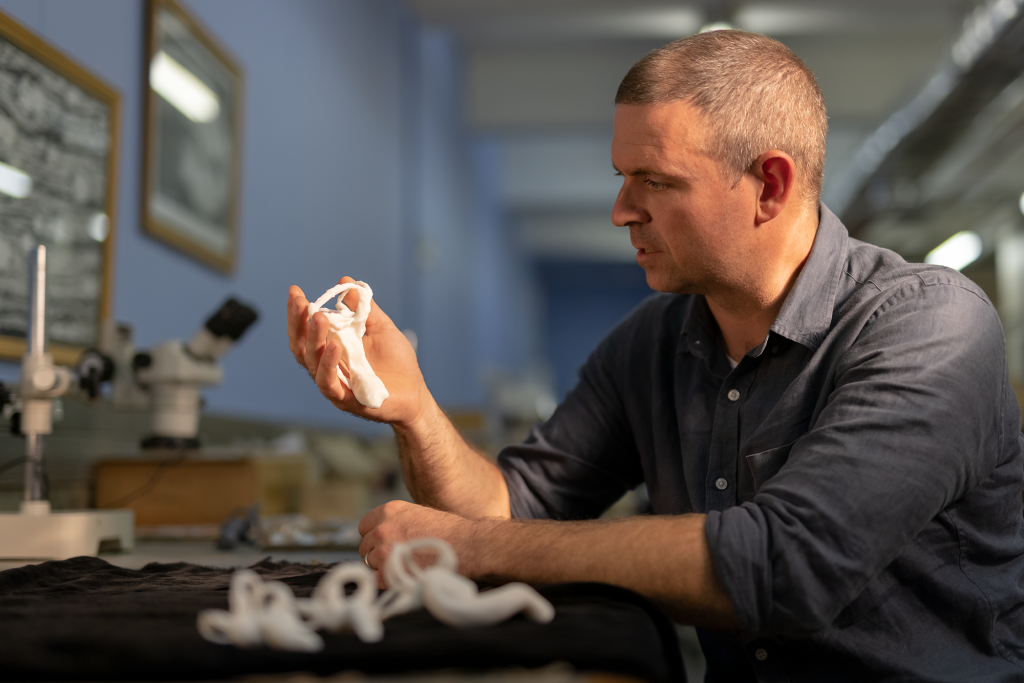
Over the past two decades or so, science has been able to learn more and more about dinosaur vision, hearing, smell and balance through the use of X-ray micro computed tomography (micro-CT). Micro-CT allows palaeontologists to see structures inside a fossil skull in 3D. The target of these studies has often been the inner ear.
Back in 2009, I was part of a study that used micro-CT to test whether the dimensions of the cochlear canal could be used to estimate hearing sensitivity in extinct birds and dinosaurs. It turned out that the length of the cochlear canal is related to this sensitivity, but when our technique has been used to estimate hearing in dinosaurs, the results usually show dinosaurs to have had pretty average hearing. This is what we would expect, given owl-like adaptations are probably very recent in evolutionary terms.
A study published today in the journal Science pretty much turns this view on its head.
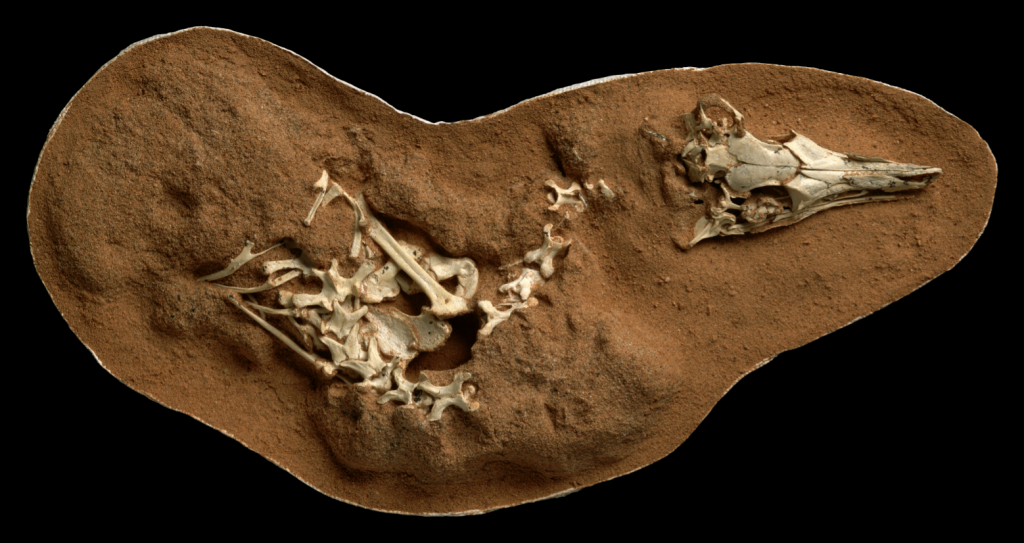
One group of theropods (two-legged meat-eating dinosaurs) had indeed evolved some pretty amazing hearing abilities rivalling those of the barn owl. Alvarezsaurs were a group of very small theropods that had unusual arms and hands. If you think the arms and hands of Tyrannosaurus rex were inadequate with their two digits, alvarezsaur hands go one step further in being short and having only one digit. However, the arms appear to have been very strong and are thought to be adapted to digging, possibly into termite mounds. Perhaps the sensitive ears of alvarezsaurs were adapted for hearing the sounds of their tiny insect prey.
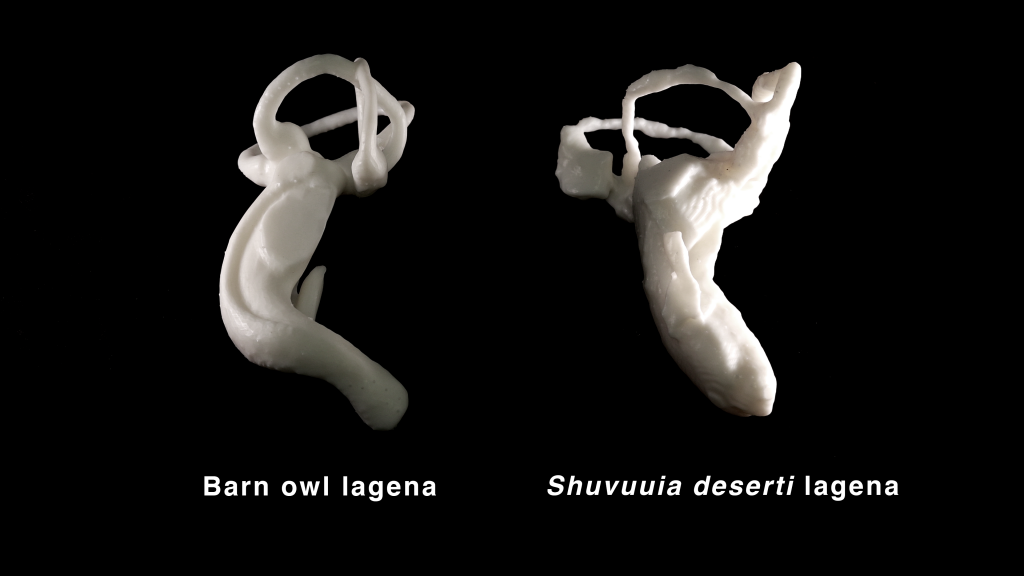
Interestingly, this study also found that, like owls, alvarezsaur eyes were unusual too. We can estimate how large dinosaur eyes might have been by measuring the eye socket. But learning anything more specific about dinosaur vision is trickier. For one thing, a large eye might be packed with light-gathering rod-cell light sensors for allowing the owner of the eyes to see in low light, but it might also be packed with cone-cells that give the owner sharp colour vision. Unfortunately, these sensory cells rarely leave a trace in fossils.
However, the internal diameter of the sclerotic ring in alvarezsaurs is particularly large. This shows that the pupils of their eyes could open much wider than in other dinosaurs to let more light in. This brings us back to the exciting study published today, that used our specimens as part of the analysed dataset. The two pieces of evidence taken together (the large, light-gathering eye and sensitive hearing of alvarezsaurs) must surely mean that these small theropods were adapted to hunt in the dark.
3D model of a Shuvuuia deserti skull illustrating the cochlea canal. (Courtesy of University of the Witwatersrand, South Africa.)
This strongly suggests that alvarezsaurs must also have been adapted to live in cooler night conditions. We already know that most, if not all, theropods were able to generate their own body heat, and many were insulated by feathers, just as living birds are. We know that these small alvarezsaurs had feathers, although we cannot be sure just how well insulated they were from fossil evidence.
This study was very careful not to speculate too much about these dinosaurs, but this is a blog, and I like to throw things out there in blogs. Can we deduce anything else about alvarezsaurs from the results of this study?
Well, there is evidence that at least some theropods had iridescent feathers. In other words, that they had pigments in their feathers that made them glow in the presence of ultraviolet light, like the feathers of many bird species do today. Species of theropods that had iridescent feathers must have been able to detect reflected ultraviolet light and actually see this iridescence. In birds, this is used to attract mates and for recognising members of their own species.
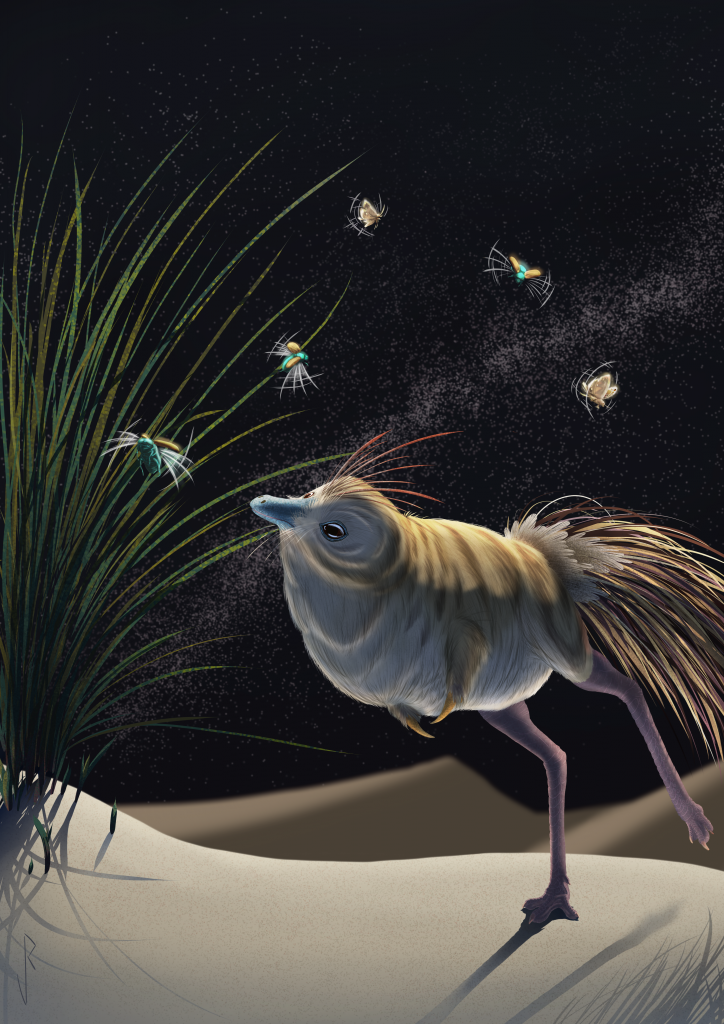
Because there is very little ultraviolet light available at night, I’d hazard a guess that alvarezsaurs didn’t have iridescent feathers, and also wouldn’t have been able to see ultraviolet light. In fact, if they had eyes full of rod light sensors, they probably couldn’t detect much in the way of colour at all.
This important discovery has shed light on previously unknown dinosaur behaviour (or maybe we’re just getting better at seeing in the dark!). As we find more fossils of dinosaurs, and as the number of tools to analyse those fossils grows, who knows what more we’ll be able to find out about these amazing extinct animals in the future?
